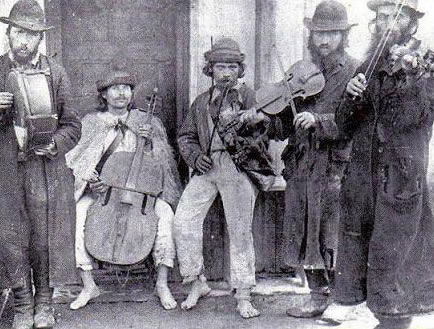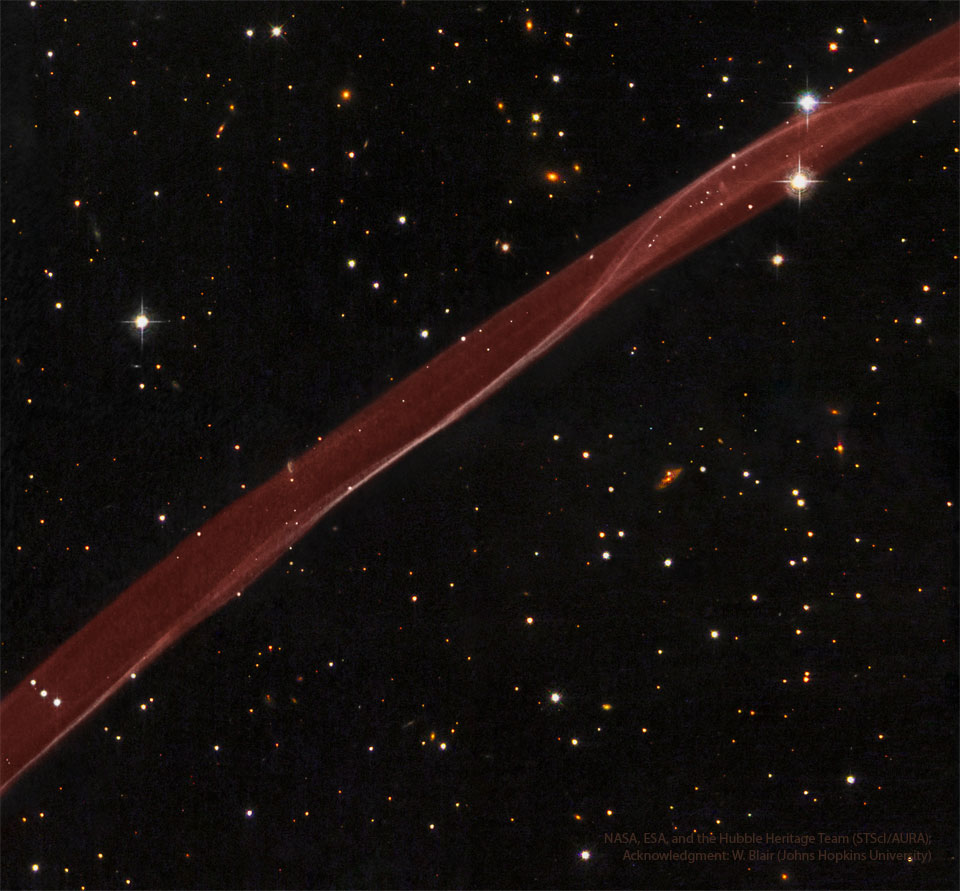Blog
Rahsaan Roland Kirk (born Ronald Theodore Kirk; August 7, 1935 – December 5, 1977), known earlier in his career simply as Roland Kirk, was an American jazz multi-instrumentalist who played tenor saxophone, flute, and many other instruments. He was renowned for his onstage vitality, during which virtuoso improvisation was accompanied by comic banter, political ranting, and the ability to play several instruments simultaneously.
Ronald Theodore Kirk was born in Columbus, Ohio, where he lived in a neighborhood known as Flytown. He became blind at two years old, which he said was a result of improper medical treatment. As a teenager, Kirk studied at the Ohio State School for the Blind. By age fifteen he was on the road playing rhythm and blues on weekends with Boyd Moore’s band. According to saxophonist Hank Crawford, “He would be like this 14-year-old blind kid playing two horns at once. They would bring him out and he would tear the joint up.” Crawford heard him during this period and said he was unbelievable. He remarked, “Now they had him doing all kinds of goofy stuff but he was playing the two horns and he was playing the shit out of them. He was an original from the beginning.” Kirk felt compelled by a dream to transpose two letters in his first name to make ‘”Roland”. In 1970, Kirk added “Rahsaan” to his name after hearing it in a dream.
more...George Abel Van Eps (August 7, 1913 – November 29, 1998) was an American swing and mainstream jazz guitarist.
George Van Eps was born in Plainfield, New Jersey, United States, into a family of musicians. His three brothers – Fred Abel Van Eps, Jr. (1907–1980), Robert B. Van Eps (1909–1986), and John A. Van Eps (1912–1945) – were musicians. His mother, Louise Abel, was a classical pianist and his father, Fred Van Eps, was a ragtime banjoist and sound engineer. George Van Eps began playing banjo when he was eleven years old. After hearing Eddie Lang on the radio, he put down the banjo and devoted himself to guitar. By the age of thirteen, in 1926, he was performing on the radio. Through the middle of the 1930s, he played with Harry Reser, Smith Ballew, Freddy Martin, Benny Goodman, and Ray Noble.
Van Eps moved to California and spent most of his remaining career as a studio musician, playing on many commercials and movie soundtracks.
more...Charles Luckyth Roberts (August 7, 1887 – February 5, 1968), better known as Luckey Roberts, was an American composer and stride pianist who worked in the jazz, ragtime, and blues styles.
Luckey Roberts was born in Philadelphia, Pennsylvania, United States, and was playing piano and acting professionally with traveling Negro minstrel shows in his childhood. He settled in New York City about 1910 and became one of the leading pianists in Harlem, and started publishing some of his original rags.
Roberts toured France and the UK with James Reese Europe during World War I, then returned to New York where he wrote music for various shows and recorded piano rolls.
more...Sitting in with Jewbalaya performing Sunday August 6th 2023 @ 7pm at the Slavic Experience Festival in St Louis Park https://slavicexperience.com

more...
One of the most violent explosions ever witnessed by ancient humans. Back in the year 1006 AD, light reached Earth from a stellar explosion in the constellation of the Wolf (Lupus), creating a “guest star” in the sky that appeared brighter than Venus and lasted for over two years. The supernova, now cataloged at SN 1006, occurred about 7,000 light years away and has left a large remnant that continues to expand and fade today. Pictured here is a small part of that expanding supernova remnant dominated by a thin and outwardly moving shock front that heats and ionizes surrounding ambient gas. The supernova remnant SN 1006 now has a diameter of nearly 60 light years.

Regina Carter (born August 6, 1966) is an American jazz violinist. She is the cousin of jazz saxophonist James Carter.
Carter was born in Detroit and was one of three children in her family.
She began piano lessons at the age of two after playing a melody by ear for her brother’s piano teacher. After she deliberately played the wrong ending note at a concert, the piano teacher suggested she take up the violin, indicating that the Suzuki Method could be more conducive to her creativity. Carter’s mother enrolled her at the Detroit Community Music School when she was four years old and she began studying the violin. She still studied the piano, as well as tap and ballet.
As a teenager, she played in the youth division of the Detroit Symphony Orchestra. While at school, she was able to take master classes from Itzhak Perlman and Yehudi Menuhin.
Carter attended Cass Technical High School with a close friend, jazz singer Carla Cook, who introduced her to Ella Fitzgerald. In high school, Carter performed with the Detroit Civic Orchestra and played in a pop-funk group named Brainstorm. In addition to taking violin lessons, she also took viola, oboe, and choir lessons.
more...Ravi Coltrane (born August 6, 1965) is an American jazz saxophonist. Co-owner of the record label RKM Music, he has produced pianist Luis Perdomo, guitarist David Gilmore, and trumpeter Ralph Alessi.
Ravi Coltrane is the son of saxophonist John Coltrane and jazz harpist Alice Coltrane. He is the second born of John and Alice Coltrane’s three children; John Jr. and Oran. Alice had a daughter Michelle prior to her union with John Coltrane. He is a first cousin once removed of experimental music producer Steven Ellison, aka Flying Lotus. He was raised in Los Angeles, California, and was named after sitar player Ravi Shankar. Ravi Coltrane was less than two years old in 1967 when his father died.
He is a 1983 graduate of El Camino Real High School in Woodland Hills, California. In 1986, he studied music, concentrating on saxophone at the California Institute of the Arts. He has worked often with Steve Coleman, a significant influence on Coltrane’s musical conception. Coltrane has also played with Geri Allen, Kenny Barron, McCoy Tyner, Pharoah Sanders, Herbie Hancock, Carlos Santana, Stanley Clarke, Chick Corea, and Branford Marsalis.
more...Joseph Louis Diorio (August 6, 1936 – February 2, 2022) was an American jazz guitarist. He performed with Sonny Stitt, Hal Crook, Eddie Harris, Ira Sullivan, Stan Getz, Pat Metheny, Horace Silver, Anita O’Day, and Freddie Hubbard. In recent years he also recorded albums with modern performers including Robben Ford, Gary Willis, David Becker and Mick Goodrick.
Following in the footsteps of an uncle, Diorio took up the guitar, studying formally in the early 1950s at a local music school. He worked for a while with local bands, but in the early 1960s he ventured into New York City, where he played with several jazz musicians.
In April 2005 he struggled to regain the full use of his left hand following a stroke he suffered at his West Coast residence in San Clemente.
more...Anna Marie Wooldridge (August 6, 1930 – August 14, 2010), known professionally as Abbey Lincoln, was an American jazz vocalist and songwriter. She was a civil rights activist beginning in the 1960s.Lincoln made a career out of delivering deeply felt presentations of standards as well as writing and singing her own material.
Born in Chicago but raised in Calvin Center, Cass County, Michigan, Lincoln was one of many singers influenced by Billie Holiday. Her debut album, Abbey Lincoln’s Affair – A Story of a Girl in Love, was followed by a series of albums for Riverside Records. In 1960 she sang on Max Roach‘s landmark civil rights-themed recording, We Insist! Lincoln’s lyrics were often connected to the civil rights movement in America. In 1970, the short film Max and Abbey profiled Lincoln as a composer, vocalist, actress, writer, and activist, as well as Roach’s creative partner. Stan Lathan directed the documentary, which was broadcast on Black Journal (TV program).
After a tour of Africa in the mid-1970s, she adopted the name Aminata Moseka.
During the 1980s, Lincoln’s creative output was smaller and she released only a few albums. Her song “For All We Know” is featured in the 1989 film Drugstore Cowboy. During the 1990s and until her death, however, she fulfilled a 10-album contract with Verve Records.
more...Charles Edward Haden (August 6, 1937 – July 11, 2014) was an American jazz double bass player, bandleader, composer and educator whose career spanned more than 50 years. Building on the work of his predecessor bassists Jimmy Blanton and Charles Mingus, Haden revolutionized the harmonic concept of bass playing in jazz, evolving a way of playing that sometimes complemented the soloist, and sometimes moved independently, to help liberate bass players from a strictly accompanying role, to becoming more direct participants in group improvisation.
In the late 1950s, he was an original member of the ground-breaking Ornette Coleman Quartet. In 1969, he formed his first band, the Liberation Music Orchestra, featuring arrangements by pianist Carla Bley. In the late 1960s, he became a member of pianist Keith Jarrett’s trio, quartet and quintet. In the 1980s, he formed his band, Quartet West. Haden also often recorded and performed in a duo setting, with musicians including guitarist Pat Metheny and pianists Hank Jones and Kenny Barron.
German musicologist Joachim-Ernst Berendt wrote that Haden’s “ability to create serendipitous harmonies by improvising melodic responses to Coleman’s free-form solos (rather than sticking to predetermined harmonies) was both radical and mesmerizing. His virtuosity lies (…) in an incredible ability to make the double bass ‘sound out’. Haden cultivated the instrument’s gravity as no one else in jazz. He is a master of simplicity which is one of the most difficult things to achieve.”
Haden was born in Shenandoah, Iowa. His family was exceptionally musical and performed on KMA radio as the Haden Family, playing country music and American folk songs. Haden made his professional debut as a singer on the Haden Family’s radio show when he was just two years old. He continued singing with his family until he was 15 when he contracted a bulbar (brainstem) form of polio affecting his throat and facial muscles. At the age of 14, Haden had become interested in jazz after hearing Charlie Parker and Stan Kenton in concert.
more...Lies some 1,500 light-years away, its shape and color in this telescopic view reminiscent of a robin’s egg. The cosmic cloud spans about 3 light-years, nestled securely within the boundaries of the southern constellation Fornax. Recognized as a planetary nebula, egg-shaped NGC 1360 doesn’t represent a beginning though. Instead it corresponds to a brief and final phase in the evolution of an aging star. In fact, visible at the center of the nebula, the central star of NGC 1360 is known to be a binary star system likely consisting of two evolved white dwarf stars, less massive but much hotter than the Sun. Their intense and otherwise invisible ultraviolet radiation has stripped away electrons from the atoms in their mutually surrounding gaseous shroud. The predominant blue-green hue of NGC 1360 seen here is the strong emission produced as electrons recombine with doubly ionized oxygen atoms.

more...
Alan Jones (born August 5, 1962) is an American jazz drummer, composer and educator. Born in Longview, Washington, he moved to Portland, Oregon at an early age and took up the drums and guitar as a young child. Jones’ first experience in his early career was with Count Dutch, an organist from Amsterdam who hired Jones to work with him as a drummer. His first album was Unsafe which was published in 1998.
Jones moved to Portland Oregon at an early age. He began playing the drums and guitar as a young child and had some instruction from local Jazz Pianist and Educator Arletta O’hearn Jones spent his high school years soaking in the vibrant local music scene. “I saw Dexter Gordon when I was in high school,” recalls Jones, who sneaked in an upstairs window to soak up the music before he was caught and ejected”. Jones was inspired by Jazz musicians Saxophonist Sonny King, John Stowell and Mel Brown as well as Jim Pepper and David Friesen who would help establish his early career. One of the first such experiences was provided by an organist from Amsterdam named Count Dutch, who hired Jones to work with him on the road after hearing him play at one of Dutch’s jam sessions. These tours also presented an opportunity to play extensively with Saxophonist Jim Pepper, a relationship that Jones would build on in the future. This musical period lasted until Dutch’s premature death three years later.
more...Rickey Woodard August 5th 1950; is an American jazz saxophonist.
Born in Nashville, Tennessee, from 1980 on Woodard spent seven years with the Ray Charles band.
A member of the Clayton-Hamilton Jazz Orchestra, Woodard has also recorded with Frank Capp and as a member of Jeannie and Jimmy Cheatham‘s Sweet Baby Blues Band.
In 1993, he embarked on a series of yearly visits to the Peterborough Jazz Club in England, billed with veteran British jazz musicians such as Dick Morrissey, John Burch, and Tony Archer.
more...
Airto Guimorvan Moreira (born August 5, 1941) is a Brazilian jazz drummer and percussionist. He is married to jazz singer Flora Purim, and their daughter Diana Moreira is also a singer. Coming to prominence in the late 1960s as a member of the Brazilian ensemble Quarteto Novo, he moved to the United States and worked in jazz fusion with Miles Davis and Return to Forever.
Airto Moreira was born in Itaiópolis, Brazil, into a family of folk healers, and raised in Curitiba and São Paulo. Showing an extraordinary talent for music at a young age, he became a professional musician at age 13, noticed first as a member of the samba jazz pioneers Sambalanço Trio and for his landmark recording with Hermeto Pascoal in Quarteto Novo in 1967. Shortly after, he followed his wife Flora Purim to the United States.
After moving to the US, Moreira studied with Moacir Santos in Los Angeles. He then moved to New York where he began playing regularly with jazz musicians, including the bassist Walter Booker. Through Booker, Moreira began playing with Joe Zawinul, who in turn introduced him to Miles Davis. At this time Davis was experimenting with electronic instruments and rock and funk rhythms, a form which would soon come to be called jazz fusion.Moreira was to participate in several of the most important projects of this emerging musical form. He stayed with Davis for about two years.
more...Leonard Harold Breau (August 5, 1941 – August 12, 1984) was an American-Canadian guitarist. He blended many styles of music, including jazz, country, classical, and flamenco. Inspired by country guitarists like Chet Atkins, Breau used fingerstyle techniques not often used in jazz guitar. By using a seven-string guitar and approaching the guitar like a piano, he opened up possibilities for the instrument.
Breau was born August 5, 1941, in Auburn, Maine, and moved with his family to Moncton, New Brunswick in 1948. His francophone parents, Harold Breau and Betty Cody, were professional country and western musicians who performed and recorded from the mid-1930s until the mid-1970s. From the mid to late 1940s they played summer engagements in southern New Brunswick, advertising their performances by playing free programs on radio station CKCW Moncton. Lenny began playing guitar at the age of eight. When he was twelve, he started a small band with friends, and by the age of fourteen he was the lead guitarist for his parents’ band, billed as “Lone Pine Junior”, playing Merle Travis and Chet Atkins instrumentals and occasionally singing. He made his first professional recordings in Westbrook, Maine at Event Records with Al Hawkes at the age of 15 while working as a studio musician. Many of these recordings were released posthumously on the album Boy Wonder.
more...More Posts
- Daily Roots with Novelette Barnett
- Pippin Musical with Theater 55 Performances
- The Cosmos with NGC 6118
- Mitch Mitchell Day
- Frank Wright Day
- Joe Liggins Day
- Colin Bailey Day
- World Fusion with Aziza Brahim
- Daily Roots with Beverley Williams
- The Cosmos with Arp 65
- Jaimoe Day
- Johnnie Johnson Day
- Louis Jordan Day
- World Music with Mama Sana
- Daily Roots with Carol Cole
- The Cosmos with Antares and Rho Ophiuchi
- Ringo Star Day
- Joe Zawinul Day
- Hank Mobley Day
- Tiny Grimes Day